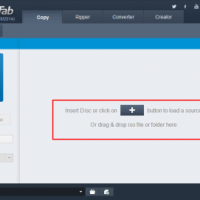Top 10 Ways to Squeeze More Rewards Out of Your Credit Cards
- Top 10 Ways to Squeeze More Rewards Out of Your Credit Cards
- 1. Redeem Your Points and Miles
- 2. Use a Cash Back Shopping Portal
- 3. Buy and Sell Gift Cards for More Cash Back
- 4. Activate Your Rewards Categories
- 5. Ditch the Annual Fee
- 6. Time Your Credit Card Sign-up for the Biggest Bonuses
- 7. Use Your Credit Card’s Hidden Perks
- 8. Connect Your Credit Cards to Loyalty Programs
- 9. Rotate Your Credit Cards and Use Them for Everything
- 10. Pick the Best Rewards Credit Cards for Your Lifestyle
While you’re looking for top 10 credit cards that suit you the most, we want to show you that all cards can be a source of small but very nice bonuses and rewards. This list is full of suggestions on the best possible use of the reward system and the comment section is a source of information on the best credit card for rewards coming directly out of the community. Look through the statements in the list, read the comments and make your decision on the best possible choice. Vote for the method that brings more rewards and share your personal insight on the whole industry.
I’ve started the “pay everything with credit” plan, paying the bill off at the end of the month, while stashing extra cash in a “high” yield savings account. It pays to do the math, my power company charge a fee to do credit transactions that would be higher than the 1.5% cash back my card gives, so that’s a check. My auto loan and insurance are thru my bank and they give me 5% discounts for autopaying from a connected checking account, so no brainer there. Only have the one for now,not really interested in playing credit roulette with a bunch of specialized cards, seems to m that thatway lies the land of spectacular fuckups (which I’ve spent more than enough time in for one life).
- 0
I set my wife up with the Citi Double Rewards card because I liked the simplicity of getting 2% on everything. 1% when you spend and 1% when you pay for it. Since we pay our balance in full every month, it’s great.
- 0
I’d point out that UPromise Dining, iDine, and AAdvantage Dining are mutually exclusive: they’re different incarnations of the same reward program.
- 0
This is from the current Pricing and Terms for the Amazon Rewards card: “Your due date will be a minimum of 21 days after the close of each billing cycle. We will not charge you interest on purchases if you pay your entire balance by the due date each month. We will begin charging interest on balance transfers, cash advances, and overdraft advances on the transaction date.” I was only able to find one review from 2013 that said anything about being charged interest from the date of purchase, so I’m skeptical. There are scenarios where you could end up paying interest from the date of purchase but it shouldn’t happen if you pay your balance on time and in full.
- 0
I’d suspect it might be that if you’re carrying a balance then the grace period isn’t offered on new purchases. Just a guess though.
- 0
Those reviews are clueless people. No such policy exists. It is a normal Chase credit card. When you pay the min balance on any credit card it charges interest on all new purchases from day of purchase. Dont carry a balance. Amazing that in 2017 people do not understand credit cards or personal finance.
- 0
Get Chase Sapphire Preferred. Not the Amazon card. 50K points bonus and free annual fee first year. At the least those points are worth $500.00. At the most $1000-1500.00 via various travel etc. Ill bet the $500 in gift cards is more than you get at Amazon (first year @3%) The Amazon card has no real bonus. After year one dump Sapphire Pref and look at some other strong bonus cards.
- 0
And Get Citibank Doublecash for 2% on everything after you get the Chase bonus.
- 0
I have the card and can confirm, it does not charge interest until the end of the billing cycle. If you pay in full whatever is on the statement you are fine.
- 0
If you’re suggesting to close the account after an year since it has an annual fee, then it is not a good move for your credit score. Might as well go for some other card which gives you less bonus points for signing up but same points (compared to Chase Sapphire) for all other purchases without any annual fee. Eg. BoA Travel rewards card.
- 0
Sort of related: Because of the new Freedom Unlimited card (1.5% cash back on all purchases, no annual fee), it finally made sense for me to pay my federal taxes via CC (I’m self-employed). The cheapest processing fee you can find is 1.87%. As an example, on a $1,000 tax bill, you’ll pay an $18.70 processing fee. That’s $1,018.70 on your credit card, or 1,528 points on the Freedom Unlimited. With a premium Ultimate Rewards card, such as the Sapphire Preferred, you can transfer those points into UR instead of taking the cash back (which would be a bad deal). Depending on who you ask, UR points are worth around 2-2.1 cents a piece. Worst case, they’re worth 1.25 cents a piece if redeemed for travel through the UR portal (20% discount). At 1.25 cents a piece, you’d get 1,528 x 1.25 = $19.10. You’ve made 40 cents. Who cares, right? But the real power of UR points are when transferred 1:1 to a partner airline. If you moved those 1,528 points to United, for the right deal, you could get 2 cents (sometimes way more) per mile/point. At 2 cents/mile, that’s 1,528 x 2 = $30.56. You’ve made $11.86, or 1.186%. Not a bad deal at all. You can even even find better mile redemption value, sometimes in the 5 cent range. TL;DR If you have a Freedom Unlimited and a Sapphire Preferred, you can’t lose by paying the 1.87% processing fee to pay your federal taxes. Worst case, you come out a hair above even (redeeming for travel through the Ultimate Rewards portal at a 20% discount). Best case, you come out over 1% (transferring your UR points 1:1 to a partner). If you carefully seek out the best value for your miles, you could even earn over 5%.
- 0
I had the CSP/Freedom combo, and decided to add the Freedom Unlimited to my repertoire this weekend. CSP for any travel/dining, Freedom for the 5% rotating categories (currently groceries for this quarter), and my newly acquired Freedom Unlimited for any other purchases. I realize that there are better cards out there for maximizing points, but the Chase trifecta (if only I had a small business for the Ink Plus...) suits my needs perfectly, and the UR points are so very flexible.
- 0
Yup. That’s the winning combo right there. Unless you have a very specific airline or hotel relationship, I think UR points are the best. As you said, they’re very flexible.
- 0
I tried to maximize my rewards by moving utility bills to credit card autopay, but living in the bass-ackwards boonies makes it difficult. Ma and Pa Water, Sewer, and Electric all want a convenience fee to pay via credit credit, and that costs more than the reward would be.
- 0
Don’t immediately dismiss the convenience fee as not being worth using the cards. If you’re trying to earn points towards a specific reward, you may want to consider how much it would cost to pay cash for any extra points you need vs. having “paid” the convenience fee and gotten extra points. Sometimes it makes sense.
- 0
You don’t even have to live in the boonies to get that kind of crap. I live in Phoenix and SRP charges a convenience fee to use my CC to pay. I do bank transfer for them, but thankfully almost everyone else will take CC without issue.
- 0
I have a Bank of America card that is basically 1% cash on everything with no limit. Given that it’s quasi free money, spending the mental resources on picking 1 of 4 different cards to use at a particular retailer is just not worth it at least to me and my wife. And just one bill to pay each month.
- 0
Not bad. USAA’s card pays 1.5% on everything, so I use my USAA CC for everything but Amazon. I have the Amazon CC built into my Amazon account, so I just get 3% off everything sold on Amazon without having to think about it, then 1.5% rewards on everything else.
- 0
Citi Doublecash pays 2%. So basically you are getting half as much as you could. Cheers!
- 0
How relevant would you say the Amazon and Retailer rewards articles are now, being 5 and 4 years old, respectively?
- 0
Little tip for anyone banking with Tangerine: Uber, for some reason, gets categorized as “Recurring Bill Payments” as far as the cash-back credit card is concerned. So if you use Uber a lot, consider making Bills one of your 2% bonus categories.
- 0
Little tip for anyone banking with Tangerine: Uber, for some reason, gets categorized as “Recurring Bill Payments” as far as the cash-back credit card is concerned. So if you use Uber a lot, consider making Bills one of your 2% bonus categories.
- 0
I’d also like to suggest that before you head to the mall, buy a gift card for that store where you plan to shop. Use your credit card. Earn points from the credit card to buy the gift card. Then earn points on the gift card at a site like eGifter, and you’ll be stacking savings higher than an Italian hoagie! Gift card purchases on eGifter range from 1% in points to a high of 24%. Simply to use a gift card to make the payment in the store. Brillance!
- 0
I am on the Chase UR plan currently. I would love to see an article on when a 5% rotating card and others, beat out The citi Double Cash. In the modern world it seems like so many transactions are categorized oddly, it seems like it makes the most sense to just get a flat 2%. Unless you specifically make tons of amazon/travel purchases.
- 0
Well, this was surprising. I’ve been thinking about a dedicated Amazon card for a while now, because I do a ton of shopping on Amazon, and 3% on their card makes more sense than 1% on my Discover card. So, this article comes up today, and I finally decided to crunch the numbers. I created an Excel sheet and entered in all the purchases from my last Discover bill. And I calculated what the rewards would be under the Amazon card - 3% for Amazon purchases, 2% for Gas Stations/Restaurants/Drugstores, and 1% Everywhere Else. My Discover card is a flat 1% everywhere, but with a rotating 5% on certain categories. But since the 5% deals have a cap, they’re barely worth mentioning - they only resulted in an extra $8 in rewards from Discover last month. Amazon purchases: $475 Gas/Rest./Drugstores: $605 Everything Else: $6,848 Rewards under the Amazon card would be $95 ($14 from Amazon, $12 from G/R/D and $68 from Everything Else) Rewards actually paid to me by Discover... $88 ($80 from the 1% and $8 from the 5% rotating categories) Clearly, if the Amazon spending was higher, the Amazon card would be better, but how much higher? To be really worthwhile, let’s say I want $25 back just from Amazon spending (because all other things are more or less equal). Well, $25 is 3% of what number? $834. I’d have to increase my spending by 75%. Having a nearly $8,000 credit card bill is not normal for us - we paid for several things last month that are not every-month occurrences (school tuition and some business expenses that were reimbursed, for example). In a normal month where it’s several thousand less, the difference between the two cards’ rewards payouts - seven dollars! - would likely be even less. Anyway, hope that’s useful to someone. I guess the moral of the story would be... rewards come slowly, even when you have large bills. And the differences between cash-back cards, even when they sound large (3% vs. 1%) might not be that large.
- 0
According to reviews on Amazon, The Amazon card (by Chase) now starts charging interest from the date of purchase instead of the end of the billing cycle. No thank you.
- 0
That same Amazon card does 2% with Office Supply stores as well as the Gas, Restaurants, and Drugstores. Don’t know if that makes the card more useful or not to you. I didn’t realize that it did that until I got it.
- 0





